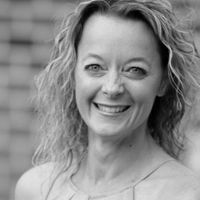Engagement | Karen Peterman
"Does it change your behavior, does it change your awareness, does it give you new skills? I think the more engaged you are in the activity itself, the more staying power that activity will have.”

2018 Interview Highlights:
What is your working definition of “engagement”?
I think definitions of engagement vary across projects and across the field. In the context of how we’ve used the engagement survey, I think about the items on that scale as measuring how locked into a learning experience the participant actually is. How are they feeling, how are they thinking, what are they doing during that experience, and is it focused on the activity itself? Their responses to those questions indicate their engagement in that context.
Does your concept of engagement differ from that of other people studying or using it?
I also do some work with AAAS, with their Center for Public Engagement with Science and Technology. The way AAAS defines public engagement with science is really about the interaction between a scientist and the members of the public, with the scientists learning alongside the public and vice versa. That’s how we define engagement with regard to the activity.
Then in other instances we’ve used the term “engagement” to measure how often something happens.
What led you to study engagement in your work?
I started looking for a tool that I could use years ago. My perspective is that of an evaluation practitioner. I had many clients who came to me and wanted to study engagement, but often they didn’t have a good working definition for what that actually meant. So for a long time we floundered. Then several years ago I came across the engagement survey from the Activation Lab, and that is what we’ve been using ever since, at least to start the conversation.
What specific projects have you done that focus on or include aspects of engagement?
We used the engagement survey most extensively in a collaborative project that focused on science festivals called EvalFest. That project was particularly interesting because it was a very different context and a very different audience than what was originally envisioned in the engagement survey. We worked with Amy Grack Nelson and Mac Cannady to think through whether and how this might work with festivals and to do some additional psychometric testing. The work that I’ve done with the engagement survey has spanned a lot of different contexts, and that’s really become a focal point of how I think about using it and how I think about the strength of the scale itself. We used it as a quick snapshot of how engaging an activity was across a lot of different contexts—and festivals are just one of those.
Given that you work across many different projects and with several different understandings of engagement, how are you informed about thinking about engagement for those particular projects?
For the public engagement with science piece, I was fortunate enough to be involved in some of the early revision of how engagement was defined. AAAS has a theory of change around that; they have a logic model, and they have a typology for public engagement with science. I was involved in little bits and pieces of that work, so I got to watch them ideate around “what is this, how are we going to define it, and how are we going to try to make it concrete enough that people can actually go out into the world and make decisions about whether what they’re seeing is public engagement with science or not—and then if it is public engagement with science, how do we begin to evaluate that and study that in a more systematic way?”
Are there any specific people or projects you would recommend practitioners to learn about?
Well, the Science Learning Activation Lab is my first stop every time. I also think that the work that AAAS is doing around public engagement with science, and the level of effort that has gone into their logic model and their theory of change, are interesting contributions to the field around how we think about engagement and interaction.
Have you seen a particularly good example of science communication or an informal science learning experience that addresses engagement?
The Science Event Summit included people who are really thinking critically about the importance of creating informal learning experiences and entertainment that stimulates people’s thinking around science. It’s difficult thinking about what is important to those people as well as how to measure engagement in a truly immersive experience that people are doing just for the love of it—difficult but fascinating, because that’s where we all want this to go. So finding ways to figure out the real, live choices that people make and the ways that public science is pushing experiences farther away from what we conceive of as our traditional learning institutions is going to be fascinating to watch.